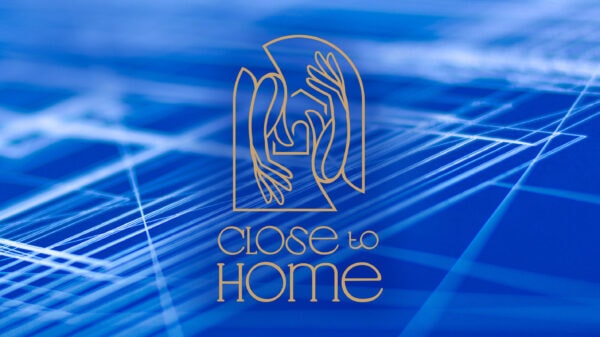New Sermon Series:
We begin this Sunday a seven-week sermon series called “Dare to Care” based on Joyce Rupp’s book Boundless Compassion. Each of us is born with the potential for deep love, compassion, and connection. Yet, through hardships, misperceptions, and the process of growth, we lose our way. We learn to judge, to violate, to hold grudges, and to protect ourselves from suffering. Compassion is our way back to the path of life. We are invited to get into the heart of Christ’s compassion and his way of love. Each week we will focus on one facet of compassion using the image of the “Tree of Compassion” with its roots (foundation for compassion), trunk (conduits of compassion), branches (reaching out with compassion), leaves (receptacles of compassion), and fruit (offering compassion). We invite you to ponder what helps you to grow the tree of compassion in your life.
Scripture for Sunday: Mark 1:40-45
40 A leper came to him begging him, and kneeling he said to him, “If you choose, you can make me clean.” 41 Moved with pity, Jesus stretched out his hand and touched him, and said to him, “I do choose. Be made clean!” 42 Immediately the leprosy left him, and he was made clean. 43 After sternly warning him he sent him away at once, 44 saying to him, “See that you say nothing to anyone; but go, show yourself to the priest, and offer for your cleansing what Moses commanded, as a testimony to them.” 45 But he went out and began to proclaim it freely, and to spread the word, so that Jesus could no longer go into a town openly, but stayed out in the country; and people came to him from every quarter.
Notes on the Text:
This week’s Bible story is about Jesus showing us a great example of awareness about the plight of people ostracized by society due to illness. It is about a nameless man, a man who is only known to us as a leper, a label. He is a man considered by his own society an outsider and as someone to be despised and ignored. During that time in history and according to the laws of purification found in the book of Leviticus chapters 13 and 14 and later in the Jewish Mishnah there were many teachings and conversations about how to deal with skin diseases. Priests/rabbis were designated to inspect such illnesses in order to deal with contagious diseases. If the priest decided that someone’s skin disease was contagious, then they would have been isolated from society. Re-entry was possible but needed to be done properly. The rabbis/priests were basically practicing community health care. But of course, the problem comes when people with contagious diseases become nameless, when they are treated as outsiders, when they are despised and then basically stripped of their rights and their significance as human beings. Society left them out of any social circles of support. We can simply say today, oh well, they just didn’t know any better. But this pattern of human behavior that is based on fear gets repeated in human history over and over again. People get victimized by the fears or indifference of the majority. Whether it is mental illness, aging, cultural or religious identity, or other human barriers we create, such barriers make people suffer, and the only cure is to reconnect with our innate God-giving capacity to care.
It is interesting to see Jesus’ reaction to the leper’s plight. In verse 41 the original text shows a textual variant for what we normally read as “moved with pity,” which is orgistheis “being angry.” But even if the word “pity” is selected, it is not a simple word of pity. The literal meaning in Greek of splagchnizomai “pity” is “having one’s intestines turn.” So, Jesus has these intense feelings in response to the condition of this nameless man with leprosy and how he was objectified and oppressed by the priests/rabbis and society. In fact, after the man was healed, Jesus sent him back as a testimony to the priest and in turn to the whole community.
Jesus saw the injustice of the situation and saw an opportunity for healing not only for the man but also for the social system that oppressed lepers and excluded them. This is in line with the fact that in Capernaum Jesus had surprised those worshipping and studying in the synagogue by teaching with a new kind of authority (Mark 1:22). He was not part of the oppressive powers of society. He was teaching to heal and to uproot the powers that oppressed people. His time in Capernaum, just a few verses before this story, was a strong effort for social reform. Jesus was of course acting in the long line of prophets before him who dared challenge and heal their societies. This story of healing has a parallel in the Hebrew Scripture with Elisha healing Naaman the Syrian commander (2 Kings 5:1-14).
For Reflection:
As I read the news this morning, there was a story about a woman and her son getting kicked off a plane due to their skin condition. Even though their appearance might have been a little scary, their disease is not contagious. The flight crew wanted a medical assurance that the woman and her son were not contagious to others and all they had was the woman’s word. It was interesting for me to read this knowing that rashes or abnormal skin appearance could trigger such fear in us. It helped me to connect better with the man with leprosy whom Jesus healed. Here is the link to the story if you are interested in reading it: https://people.com/travel/american-airlines-apologizes-for-kicking-woman-child-off-flight-skin-condition/.
As we journey with Jesus through this season of Lent, I invite you to consider what helps you become aware of the suffering of others around you. Sometimes we think of the big issues and struggles of the day and forget to pay attention to the people who are struggling around us at work, at church, in our families, and in our daily interactions. Pay attention, stay awake! Become curious about the stories of others! As Joseph Nassal says, “behind every scar there is a story.” Do you know the stories behind the scars of the people in your life? Do you listen to them without judgment and with openness?
We are using the image of the Tree of Compassion from Joyce Rupp’s book Boundless Compassion. She notes that the seeds of the Tree of Compassion are: nonjudgment, nonviolence, forgiveness and mindfulness. What awareness do you think helps you grow these seeds into a full Tree of Compassion?
Prayer by Joyce Rupp:
I pray to be the face of compassion –
that those who come within my view
find a cordial, kindly reception
written upon my facial landscape.
I pray to be the ears of compassion –
that those who come filled with distress
will experience my attentive presence,
ready to listen without distraction.
I pray to be the eyes of compassion –
that those who lack society’s support
will receive my nonjudgmental gaze,
a look of unbiased, heartfelt welcome.
I pray to be the shoulders of compassion –
that those who come laden with burdens
will be able to set things down for a while,
and have the load lightened when they leave.
I pray to be the heart of compassion –
that those who feel overwhelmed with suffering
will sense my empathic response,
one that forgoes a desire to fix the hurt.
I pray to be the mouth of compassion –
that those whose voice is not heard
will be empowered and supported
by my determined, vocal stand for justice.
I pray to be the hands of compassion –
that those who life could benefit
from my presence and my actions
will be assisted by the humble offering.
I pray to be the feet of compassion –
that those who long for companionship
will see that I walk beside them,
joined in the strength of a common humanity.
I pray that the Light of compassion shining in my soul will recognize and receive the Light shining in others, that together we will care for creation with respect and have gratitude for all that exists. Amen.


